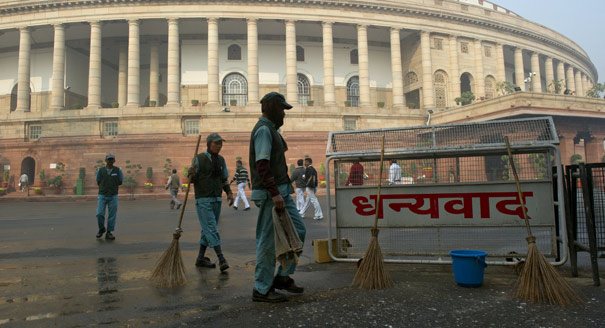Source: Oxford University Press
India is regularly celebrated as the world’s largest democracy, with an electorate of nearly 850 million people. Its elections are thought to be among the world’s most competitive; for instance, the country’s 2014 general election featured 8,251 candidates from 464 political parties.1 That same year, there were more young Indians eligible to vote in their first general election (almost 150 million) than there were total voters in the 2012 US presidential election. In 2014, voter turnout reached an all-time high, with over 66% of eligible voters casting their ballots.2 In addition to its status as the world’s largest democracy, India is also one of the world’s most expensive: candidates, parties, and their supporters spent an estimated $5 billion USD in 2014, second only to the sum expended on the 2012 presidential election in the United States (Gottipati and Singh 2014).
Despite the vibrancy of its democracy, India has struggled mightily to regulate political finance in ways that would both contain the costs of elections and curb impropriety in their funding.3 India does not suffer a dearth of reform ideas; innumerable government-sponsored commissions and independent analyses have outlined potential solutions that would improve the credibility of India’s system of regulation. Rather, India’s political finance reform has been stymied by two major factors: a lack of political will for reform, and an economy in which the state exerts a heavy hand, thus incentivizing illicit funding.According to the Perceptions of Electoral Integrity data set, India’s electoral authorities are very well regarded when it comes to issues of integrity, transparency, and impartiality.4 Out of 125 countries, India’s Election Commission (ECI) is ranked thirty-eighth overall, and fourth (out of 35) for countries in its income bracket.5 Similarly, on overall confidence in national election authorities, India performs very well—twenty-fifth of 125 in the world.6 Where India fares less well is in the realm of political finance. On the summary measure of the strength of a country’s campaign finance regime, India falls to 51 of 125 and is in the middle of the pack when compared to countries in the region, or countries with the same level of democracy (as measured by Freedom House). Compared to other lower-middle income countries, however, India’s political finance regulation rates relatively better (7 out of 35).7
This chapter outlines the evolution of India’s political finance regime over the past several decades, with a focus on the key developments that have shaped the system as it currently exists. For the purposes of this analysis, political finance encompasses both election campaign finance and the finances needed by parties to run their organizations between elections.
Very broadly speaking, we argue that India has had two distinct political finance regimes: (1) the regime of 1947–2003, characterized by candidate expenditure ceilings, party funding through private donations, and lack of transparency; and (2) the regime since 2003, marked by a partial strengthening of transparency through the Right to Information Act, coupled with civil society and media pressures buttressed by supportive judicial rulings. Despite admirable steps intended to clean up political finance, especially after 2003, our primary finding is that India’s political finance regime remains deeply problematic. While the transparency underlying political finance has improved in the past decade, the majority of political funding is still largely opaque and the ECI, the chief regulatory actor, remains hamstrung by inadequate authority to fulfill its mandate. These inefficiencies are compounded by the fact that, more than two decades after economic liberalization, the state retains vast discretionary authority in the Indian economy. Until the Indian state retreats from major sectors of the economy and gives way to market forces, the incentive will remain for politicians and business to perpetuate a system of trading policy and regulatory favors for monetary payments and campaign “donations.” ...
Read Full Text
Notes
1 Election statistics from India’s 2014 general election are available through the Press Information Bureau of the Government of India: http://pib.nic.in/elections2014/elemain.aspx (accessed 8 September 2014).
2 Voter turnout in the 2014 general election was a record for India, but is considered low relative to turnout in most established democracies.
3 Although one has to take officially reported figures with a grain of salt, India’s six national parties have themselves reported a 418% increase in funds collected during parliamentary elections between 2004 and 2014 (ADR 2015).
4 See Pippa Norris, Ferran Martinez i Coma, Max Gromping, and Alessandro Nai, 2015, "Perceptions of Electoral Integrity (PEI-3.5)," http://dx.doi.org/10.7910/DVN/UO9ABD, Harvard Dataverse, V3.
5 Data on quality of the ECI is drawn from the PEI-3.5 variable “EMBs,” which is an index measuring the quality of electoral authorities.
6 Confidence in electoral authorities is measured by PEI-3.5 variable “electoralauth.”
7 Freedom House score, region, and income level are measured by PEI-3.5 variables “fhcategory,” “region9,” and “development,” respectively.





